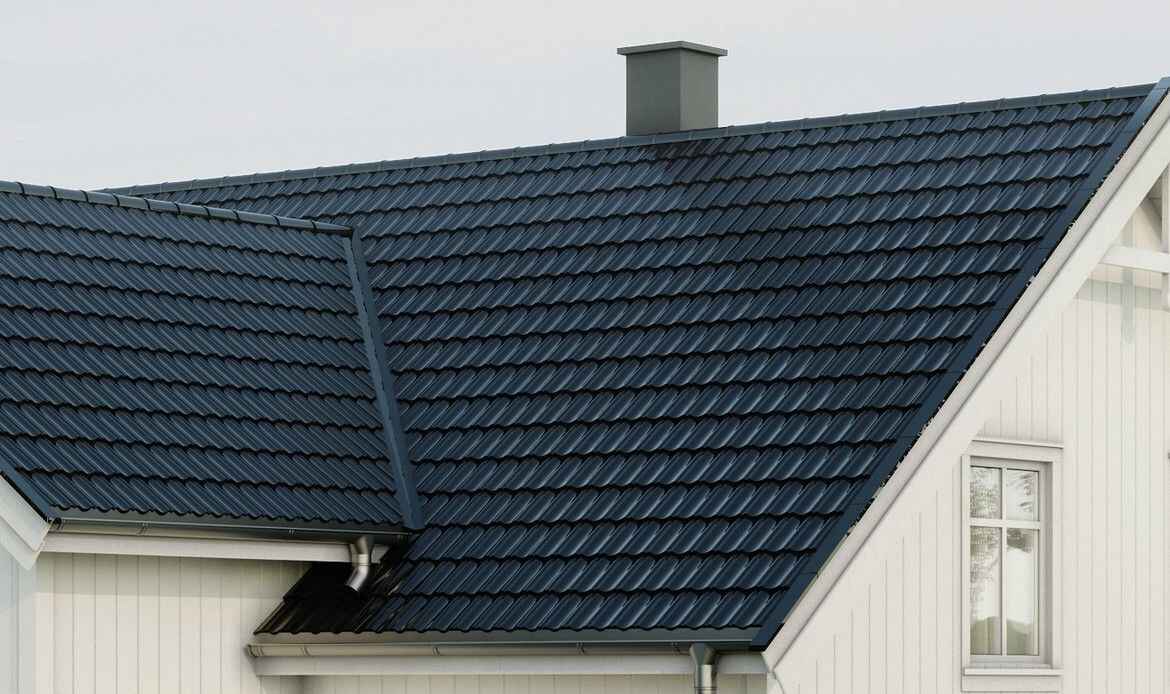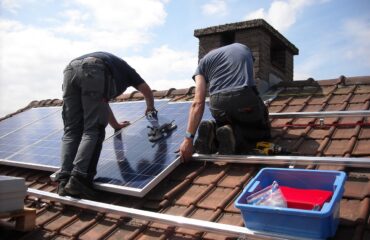When re-roofing a house and collaborating with a roofing professional, inspecting the roof thoroughly for any signs of damage is essential. This initial assessment helps you choose the right durable materials that fit your budget, emphasizing eco-friendly options. The process involves:
- Carefully removing the old roofing.
- Prioritizing safety.
- Ensuring proper disposal of waste materials.
Installation of the new roof requires attention to details like proper ventilation, flashing, and adequate underlayment to enhance durability and performance. Gutters should be cleaned to prevent future issues, and new roofing materials must be expertly laid to ensure they last.
Following the installation, a quality inspection is essential to guarantee that the roof is secure and correctly installed. This attention to detail helps avoid future complications and prolongs the lifespan of your roof, ensuring it provides maximum protection and efficiency for your home.
Roof Inspection and Preparation
Before we start re-roofing a house, it is crucial to inspect the existing roof and prepare it accordingly thoroughly. Examining shingles is a critical first step. We carefully examine each shingle for signs of damage, such as cracks, curling, or missing pieces. This helps us identify areas needing repair or replacement before laying down a new roof.
Moreover, evaluating the structure beneath the shingles is essential. We check for any rot, water damage, or weak spots that could compromise the new roof’s integrity. By conducting a detailed inspection and addressing any issues upfront, we establish a solid foundation for the re-roofing process.
Selecting the Right Materials
To guarantee a durable and high-quality re-roofing project, our team meticulously selects the most suitable materials based on the specific requirements of the house and the desired outcome. When choosing suitable materials, we consider various factors such as material options, budget considerations, environmental impact, and longevity factors. Here are four key points we focus on:
1. Material Options: We assess roofing materials like asphalt shingles, metal roofing, clay tiles, and more to determine the best fit for the project.
2. Budget Considerations: We work closely with our clients to find materials that align with their budget constraints without compromising quality.
3. Environmental Impact: Our team prioritizes eco-friendly options that have minimal environmental impact.
4. Longevity Factors: To secure a lasting re-roofing solution, we look for materials known for their durability and long lifespan.
Removing the Old Roof
We commence the re-roofing process by carefully and systematically removing the old roof to prepare to install the new roofing materials. Safety precautions are paramount during this phase. We guarantee all team members have proper safety gear, including helmets, gloves, and non-slip footwear. Before beginning the removal, we inspect the roof for any weak spots or areas of concern. Waste disposal is handled responsibly by setting up designated areas for debris and using tarps to collect and dispose of old materials.
As we dismantle the old roof, we work methodically to prevent accidents and minimize the risk of injury. Following safety protocols and efficient waste management practices are essential parts of this critical step in re-roofing a house.
Installing the New Roof
After meticulously removing the old roof, our next step is to install the new roofing materials with precision and expert care.
1. Roof Underlayment: Before laying down the new shingles, we ensure a proper roof underlayment is in place. This acts as a water-resistant barrier, enhancing the roof’s durability and protecting against leaks.
2. Ventilation: Proper attic ventilation is essential for maintaining the new roof’s longevity. We install vents to allow for airflow, prevent moisture buildup, and reduce heat in the attic.
3. Flashing: We meticulously install flashing to protect vulnerable areas such as chimneys, vents, and skylights. This metal barrier directs water away from these critical junctions.
4. Gutters: Finally, we inspect and clean the gutters to ensure proper drainage, prevent water damage, and prolong the new roof’s life.
Other Roofing Tips:





